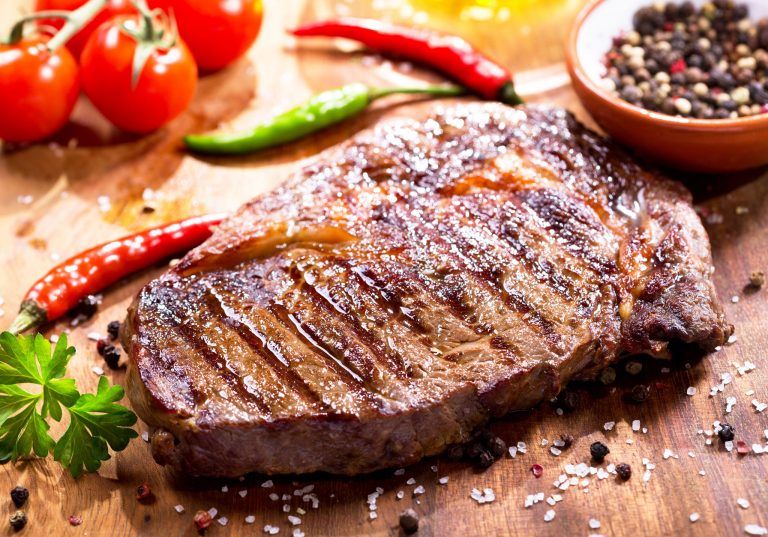Choosing the right refrigeration equipment is crucial for maintaining food quality and safety in any kitchen, whether it’s a commercial restaurant or a home setup. Different food types require specific storage conditions to ensure they remain fresh, flavorful, and safe to eat. This article will guide you through how to identify the right refrigeration for various food types, ensuring optimal preservation and efficiency in your kitchen.
Understanding Food Temperature Requirements
Before diving into specific refrigeration equipment, it’s essential to understand the general temperature guidelines for different food categories:
- Refrigeration: Most perishable items should be stored at temperatures below 40°F (4°C) to inhibit bacterial growth.
- Freezing: For long-term storage, foods should be kept at 0°F (-18°C) or lower. This slows down enzyme activity and preserves food quality.
By understanding these guidelines, you can make informed decisions on the best refrigeration equipment for your kitchen.
1. Fresh Produce
Recommended Equipment: Reach-In Refrigerators and Walk-In Coolers
Fresh fruits and vegetables require specific temperature and humidity levels to maintain freshness:
- Reach-In Refrigerators: These are perfect for quick access to fresh produce during meal prep. Choose units with adjustable shelving to accommodate various sizes and ensure good airflow.
- Walk-In Coolers: For restaurants that require bulk storage, walk-in coolers are ideal. They can maintain the appropriate humidity levels needed for different types of produce, prolonging shelf life.
Additional Tips
- Store ethylene-producing fruits (like apples and bananas) separately from vegetables to prevent premature ripening.
- Utilize humidity-controlled drawers or crisper bins if available to extend the life of leafy greens and other sensitive produce.
2. Dairy Products
Recommended Equipment: Reach-In Refrigerators and Dairy Cases
Dairy products are sensitive to temperature changes and require consistent cooling:
- Reach-In Refrigerators: Opt for models with glass doors for easy visibility and access. These units help maintain a stable temperature and allow staff to monitor stock levels efficiently.
- Dairy Cases: Specialized dairy cases with adjustable shelving are designed to keep milk, cheese, and yogurt at optimal temperatures.
Additional Tips
- Keep dairy products toward the back of the refrigerator, where temperatures are typically colder.
- Monitor expiration dates closely, as dairy has a relatively short shelf life compared to other food items.
3. Meat and Poultry
Recommended Equipment: Walk-In Freezers and Blast Chillers
Proper storage of meat and poultry is essential for safety and quality:
- Walk-In Freezers: These provide ample space for storing large quantities of meat and are essential for businesses that buy in bulk. Ensure they are maintained at 0°F (-18°C) or lower.
- Blast Chillers: These are critical for rapidly cooling cooked meats or leftovers to prevent bacteria growth. Blast chillers quickly bring food temperatures down, ensuring safety and quality.
Additional Tips
- Use separate refrigeration equipment for raw and cooked meats to prevent cross-contamination.
- Label and date all items to ensure first-in, first-out (FIFO) inventory management.
4. Seafood
Recommended Equipment: Specialized Seafood Cases and Reach-In Refrigerators
Seafood requires precise temperature control to ensure freshness and safety:
- Specialized Seafood Cases: These units maintain specific temperatures and humidity levels, ideal for displaying fresh fish and shellfish. They often include features that allow for easy drainage of melted ice.
- Reach-In Refrigerators: These are useful for storing seafood ingredients that need quick access during meal preparation.
Additional Tips
- Store seafood at temperatures between 30°F (-1°C) and 34°F (1°C) for optimal freshness.
- Always use ice or gel packs to keep seafood chilled during transport and display.
5. Baked Goods
Recommended Equipment: Display Refrigerators and Proofing Cabinets
Baked goods require special storage conditions to maintain their texture and flavor:
- Display Refrigerators: These units are great for showcasing pastries and cakes while keeping them at safe temperatures. Choose models with glass fronts to attract customers and maintain visibility.
- Proofing Cabinets: For bakeries, proofing cabinets create a controlled environment for dough to rise. They provide warmth and humidity, essential for proper fermentation.
Additional Tips
- Store bread in a cool, dry place; refrigeration can cause bread to become stale. Instead, consider freezing for long-term storage.
- Keep cakes and pastries in airtight containers to prevent them from drying out.
6. Beverages
Recommended Equipment: Beverage Coolers and Wine Refrigerators
Beverages require specific refrigeration solutions for optimal serving temperatures:
- Beverage Coolers: These units are perfect for keeping soft drinks, juices, and water cold. Many models come with adjustable shelves for organizing various drink sizes.
- Wine Refrigerators: Designed to maintain specific temperature ranges, wine refrigerators help preserve the flavor and quality of wine. They also control humidity levels, which is essential for cork integrity.
Additional Tips
- Store wines at 45°F to 65°F (7°C to 18°C) depending on the type. Red wines typically require slightly warmer temperatures than whites.
- Keep beverages out of direct sunlight to avoid temperature fluctuations.
Conclusion
Identifying the right refrigeration equipment for specific food types is vital for maintaining food quality, safety, and operational efficiency. By understanding the unique storage needs of fresh produce, dairy, meat, seafood, baked goods, and beverages, you can select the appropriate refrigeration solutions that enhance your kitchen’s performance. Investing in the right equipment not only helps in preserving food but also contributes to the overall success of your culinary endeavors. With proper refrigeration in place, you can focus on what you do best: creating delicious meals for your customers.
Check the latest article on Kitchen Equipment!



